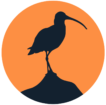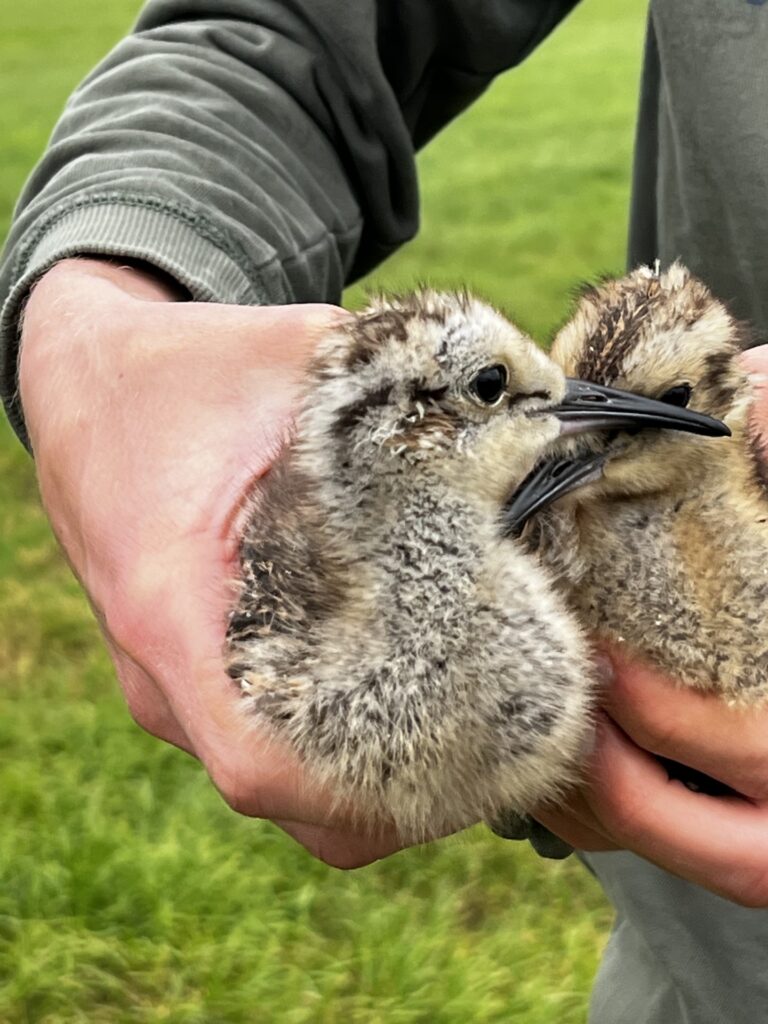Written by:
- Mike Smart, Mary Colwell – Curlew Action
- Rebecca Pringle - Natural England
We visited the Netherlands to see how Curlews are faring in the intensive farmland that makes up the majority of this small, highly managed country - can we glean any wisdom on how to help curlews nesting in the lowlands in the UK? As in our recent visit to Finland, Curlew Action believes that by exchanging ideas and information with our European friends we can better care for endangered wildlife like the Curlew. We all share a love of these enchanting birds and want to see them thrive, both in their wintering and breeding grounds. There is much we can learn from each other. A spirit of generous cooperation, friendship and sharing of best practice can help us tackle the enormity of the issues Curlews face across the European continent. As ever, if we protect and care for Curlews, so many other species benefit as well. We are very grateful for the warm welcome and generosity of the people we have met so far. We are different countries, of course, but there are definitely insights we can share.
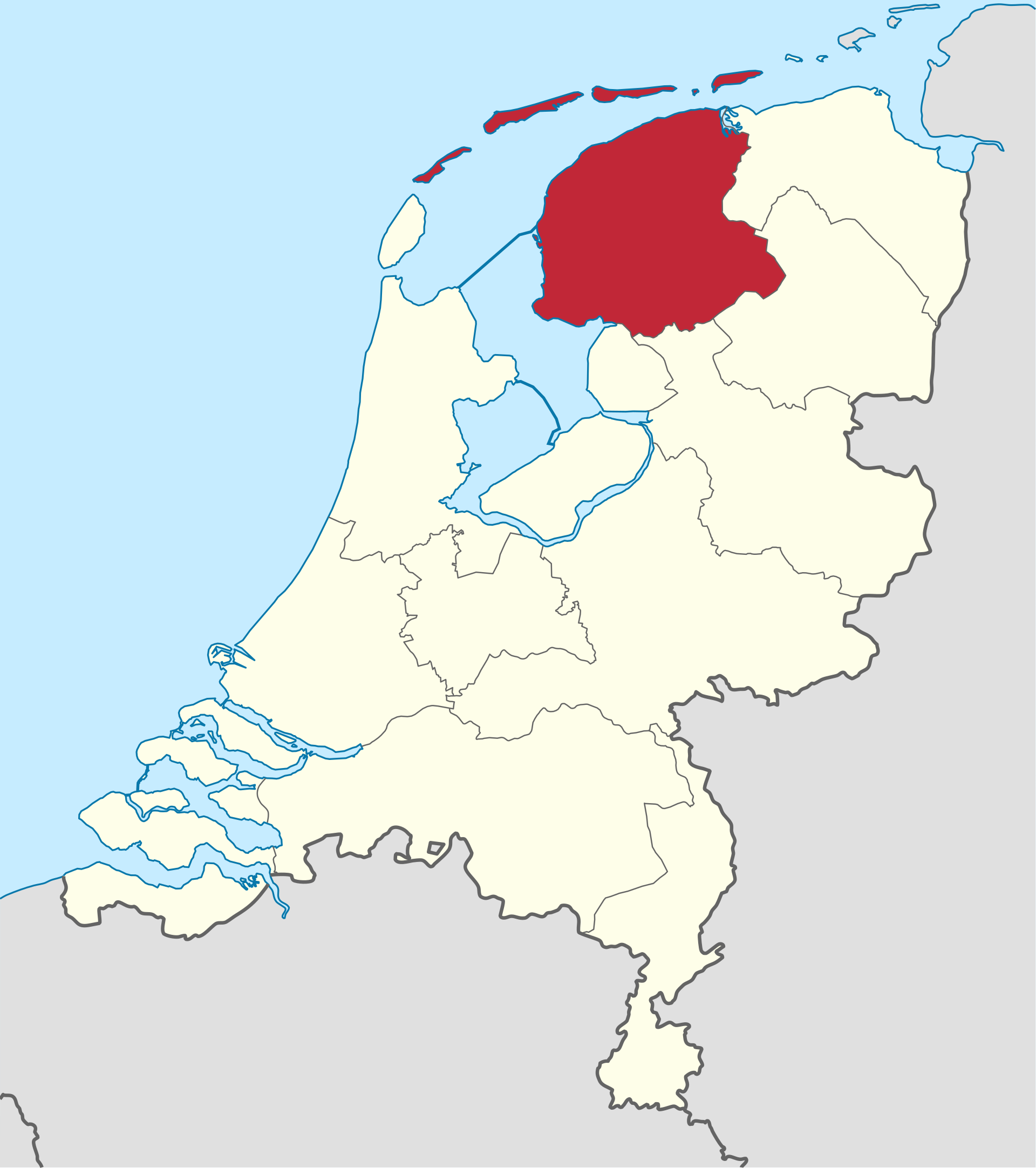
There are 3.8 million cows in the Netherlands, just over 40% are for dairy. Much of the land surface of the Netherlands is dedicated to supporting livestock. The amount of time cattle spend out of doors varies, farms with free-ranging cows receive a premium, but a growing number of dairy farms keep cows inside all year, so called zero grazing. Public demand is increasing for cattle to spend some time out of doors but it is a complicated picture as farmers wrestle with the reality of the economics of a system based on large-scale, intensive practices. Large herds kept inside and fed on silage made from grass and maize from the surrounding fields is more cost-effective than smaller herds grazed outside:
“The Dutch government set the goal that 80% of the dairy cows in the Netherlands should have access to pasture in 2020, while over the past 15 years this number has decreased from about 90 to 65 percent. Main reasons for this decrease are an increase in stocking density and an increase in the use of automation. In general, precision feeding and excreta distribution is more difficult in grazing systems than in zero-grazing systems.” - Click here to read publication
As so much land is given to feed cattle, both in and out of doors, dairy farms are crucial to the future of Curlews in the Netherlands. On our first day we had a privileged introduction to the landscapes of Friesland, a culturally distinct area in the north east, and vitally important to the dairy industry. Our host was Theunis Piersma, an internationally acclaimed wader ecologist and professor at the University of Groningen.

Theunis Piersma, Mike Smart, Mary Colwell and Rebecca Pringle
First impressions of the area are of vast, rectangular fields of grass, few trees and not many animals outside. Grass for silage is the predominant crop, but large fields of maize, tulips and other crops form part of the mosaic.
The large herds produce a lot of slurry and methane. To reduce nitrogen losses to the atmosphere, slurry is injected into the soil after each cut of grass producing over-nutrification. In practice, about half of the land surface of the Netherlands is treated with slurry two or three (up to five) times a year. As the government has a target to reduce emissions by 50% by 2030 and wants to reduce herd size, political tension has arisen with the farming industry who see a threat to their livelihoods and way of life. Curlews and other ground-nesting birds find themselves in the midst of this complex mix of industry, climate change, culture and economics.

Friesland farmland
Theunis is renowned for his work on Black-tailed Godwits (BTGs), a rapidly declining wading bird across the Netherlands but which was once a common sight. The population has declined by 50% over the last 20 years, and continues to fall. It is now estimated to be around 25,000-30,000 pairs. As he was born and brought up in Friesland, he termed the phrase “landscape pain” to describe the dramatic changes he has seen and the effect it has had on wildlife. Agriculture intensified during the later decades of the twentieth century, as it did across most of Europe, turning smaller farms into large agri-business. As a child Theunis would see post-breeding roosts of 10,000 godwits, today there are no large roosts at all. As with Curlews, BTGs fall foul of frequent mowing of grass during the breeding season and high levels of predation. Curlews have now gone from Friesland, and BTGs could share the same fate for the same reasons.
Theunis believes the most effective conservation is done through local engagement, such as speaking in Frisian, appealing to the local culture and tradition and reviving cultural memories and associations, alongside practical conservation advice. “Godwits are strong in the emotional and physical landscape here, by speaking in the right way we can dream a common dream. As people love the meadow birds (a phrase used to describe all the species of waders nesting in the fields) we can tell farmers that by working with nature, not against it, the meadow birds come for free.”
The big issue, he thinks, is that farmers are trapped in an agricultural industry that demands they intensify and use fertiliser, pesticides, large machines, lots of water etc. If a way can be found to encourage smaller scale and more local agri-business models to flourish once again, both society and wildlife would benefit - but that is a hard message to get across. Independent thinking away from the norm is easier said than done.
The impact of so many chemicals on the ground is shown in the livers of BTGs, but relating that to health, both for the birds and the human population, is not direct. Some concern has been expressed about human well-being, but proof is needed. Toxins in the birds’ livers is an additional factor in an already stressed system. In itself it may not be enough to harm them, but it is death by a thousand cuts as the pressures mount.
Theunis postulated that one of the reasons for Curlews disappearing from the Friesland landscape is the eradication of favoured prey for the chicks, such as larger arthropods, crickets and grasshoppers. New work on the diet of Curlew chicks is now underway by Wytse de Haann at the University of Groningen, which may help illuminate the connection between insect diversity and abundance with chick survival.
To restore meadows bird populations, Theunis and colleagues want to see four major changes to the way land is used: the ground re-wetted, the water table restored, the use of chemicals reduced and a decrease in mowing frequency. We asked why predator control is not in his top 4 recommendations as predation is certainly a major issue. He believes that it is too easy to blame predators for a system that is failing badly in many areas. They become a scapegoat for bad practice.
We finished the visit in Workumerwaard, an area outside of the sea wall rich in wildflowers. It is not cut until later in the summer and there is no fertilisation of the soils. Godwits sailed overhead, Redshank ran through the flowers and Lapwing whined and protested at the disturbance. Theunis said so much of Friesland used to look like this, and it could again if agriculture is changed, but it has to be quickly if we are to hold onto meadow birds. There are still patches of wilder ground left, but so much more is needed to restore the landscape back to health.
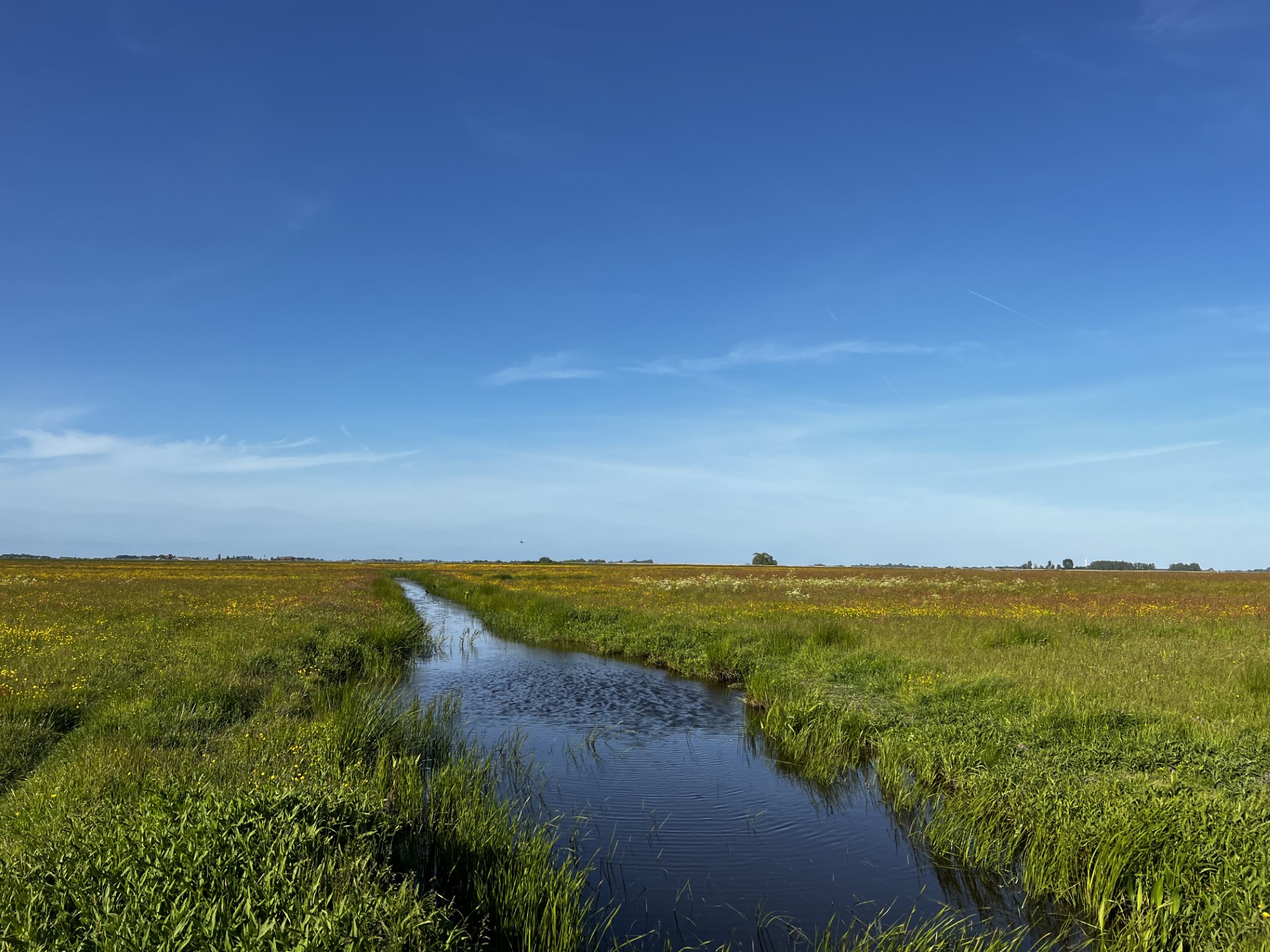
Workumerwaard
We were provided with extra information in books and theses which we will summarise in an end-of-trip blog.
As we drove back to the hotel, Theunis pointed out a common feature on many Friesland roofs, carved wooden end-boards in the shape of two swans. They sit above a heart-shaped hole providing an entrance to the roof space. Traditionally these holes were used by barn owls who would nest in the roof and help reduce the mouse population, a delightful example of human/wildlife cooperation. Even though the main feature is two swans, a common bird in Friesland, they are called ‘owl-boards’. Nowadays they are more for decoration and the hole is blocked. It seemed to be a symbol of our lost connection to nature.
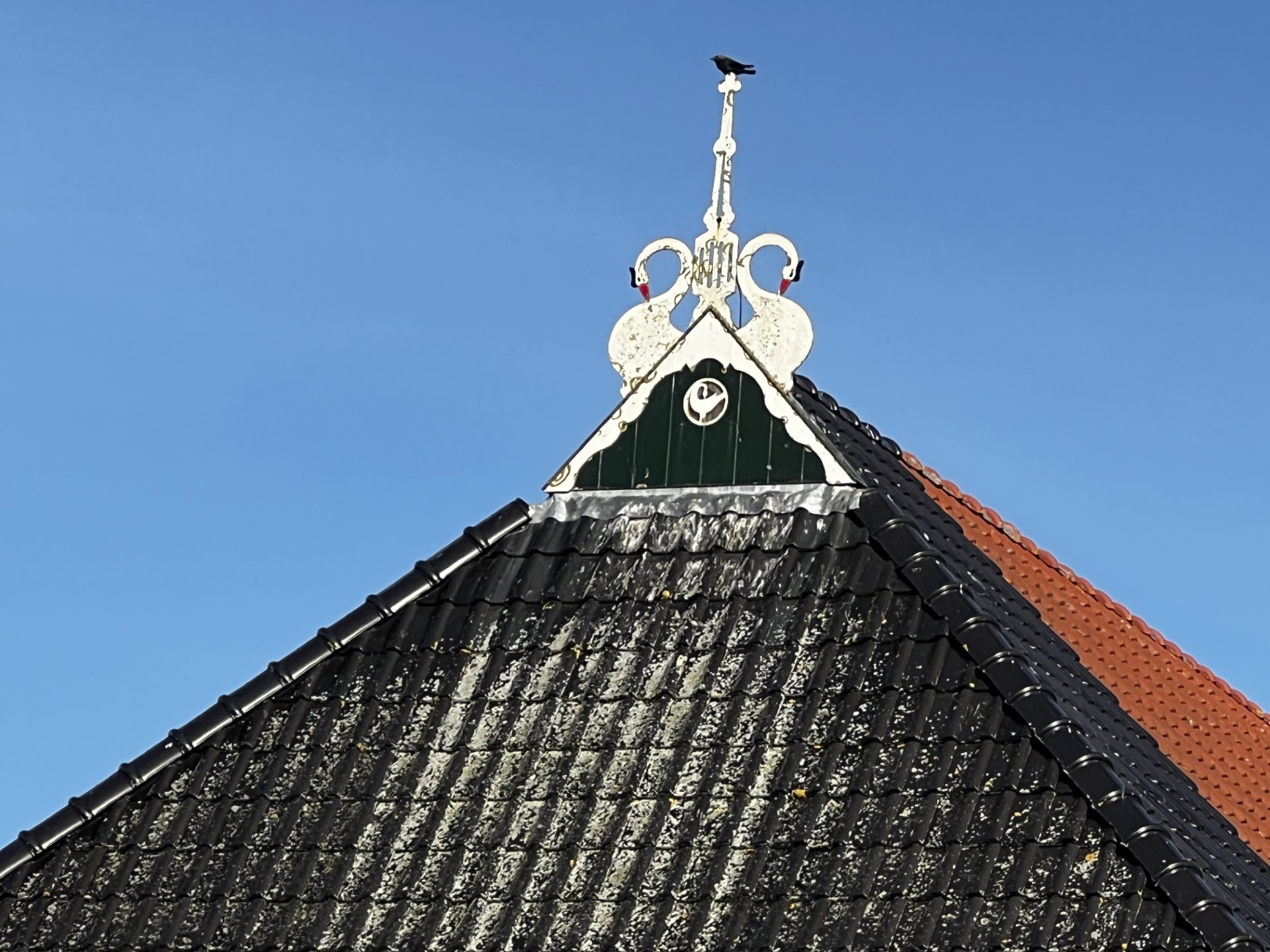
There is a lot of good work being done in Friesland, and it is a fascinating area rich in history and culture, if that deep and ancient connection to the land can be revived, there is hope that BTGs will recover and Curlews return to Friesland fields once more.
Thank you to Theunis for such a fascinating visit.
